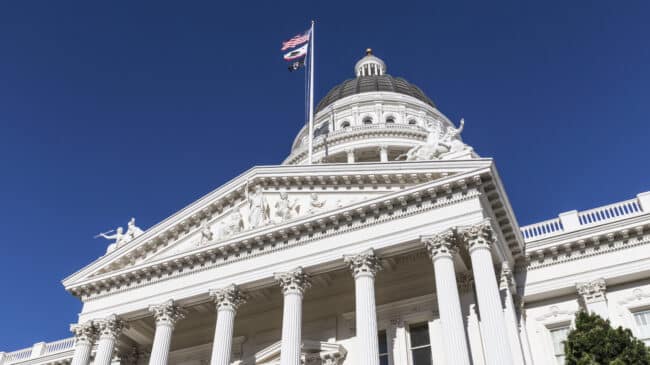The California Public Employees Retirement System (CalPERS) recently announced investment losses for its latest fiscal year, which will add to the state’s pension debt. CalPERS now has approximately $611 billion in pension debt and is 72% funded, meaning it only has 72 cents of every dollar in retirement benefits already promised to workers. As a result, California’s state and local governments can expect to face continuing budgetary pressure from public employee pension benefit costs for the next several years.
CalPERS reported a -6.1% return for its fiscal year ending June 30, 2022. Even though it lost billions, the -6% loss compares favorably to the change in broad stock market indices. For example, the S&P 500 index experienced a total return, including dividends, of -10.6% during the 12 months ending June 30. Because CalPERS invests in other asset classes that outperformed stocks, it did not face the full impact of the stock market decline.
But at least some of the outperformance may be illusory. CalPERS’ two best-performing asset classes—private equity and real assets— are reported on a one-quarter lag. So, CalPERS’ reported results do not reflect valuation changes from April through June when the values of many types of risky assets were falling. While CalPERS investment policies led to outperformance in the most recent fiscal year, they resulted in serious underperformance during the prior year. In its 2021 fiscal year, CalPERS reported returns of 21.3%—typically great news, but well below the S&P 500 return of 40.8% for the same period and lower than all other major US pension funds with the same fiscal year-end date.
Going forward, there is some concern that CalPERS management could lose focus on maximizing risk-adjusted returns for retirees as its investment team potentially becomes preoccupied with environmental, social, and governance (ESG) issues. The CalPERS board has received presentations on Sustainable Investing, the organization’s “Diversity, Equity, and Inclusion Framework,” and the “Racial Impacts of Financial Market Operations.” Although we might wish this was not the case, there can be tension between optimizing investments and prioritizing social goals in investment strategies.
To CalPERS’ credit, it used some of its good investment performance last year to lower its discount rate and assumed rate of return from 7% to 6.8%, which is more conservative than most other large public employee pension funds. This change slightly cushions the impact of 2022’s -6% results.
Ultimately, the impact of this year’s negative returns and unfunded public pension liabilities affect contributions required to be made by the state government and any local government that participates in CalPERS, including most Southern California cities.
Employer contribution rates—ultimately paid by taxpayers— are determined on a roughly 14-month lag from the end of the fiscal year. So, this summer, government employers will be receiving good news about lower contribution requirements arising from 2021’s results. But these benefits will be almost fully reversed when governments receive their updated actuarial reports from CalPERS next summer.
Over the longer term, there may be some good news for these government employers, and taxpayers as the benefits from Brown-era pension reforms begin to take hold. These reforms lower the amount that governments need to contribute on behalf of public employees hired after Jan. 1, 2013. As these newer employees replace more senior staffers eligible for CalPERS “classic” benefit plans, the overall cost of public pensions will begin to drop for many employers. Actuaries at consulting firm GovInvest expect these savings to start kicking in for most government employers after the 2028-29 fiscal year, at which point employer contributions as a percentage of payroll will begin falling.
California’s local governments can expect to face continuing budgetary pressure from public employee pension benefits for the next several years. But thanks to more conservative investment assumptions and prior reforms, the impacts will not be as severe as those faced by governments in Illinois, New Jersey, and some other states. And, over the longer term, there may be light at the end of the tunnel as long as state and local tax bases hold up, market conditions improve, and CalPERS invests wisely.
This column originally ran in The Orange County Register.
Stay in Touch with Our Pension Experts
Reason Foundation’s Pension Integrity Project has helped policymakers in states like Arizona, Colorado, Michigan, and Montana implement substantive pension reforms. Our monthly newsletter highlights the latest actuarial analysis and policy insights from our team.

